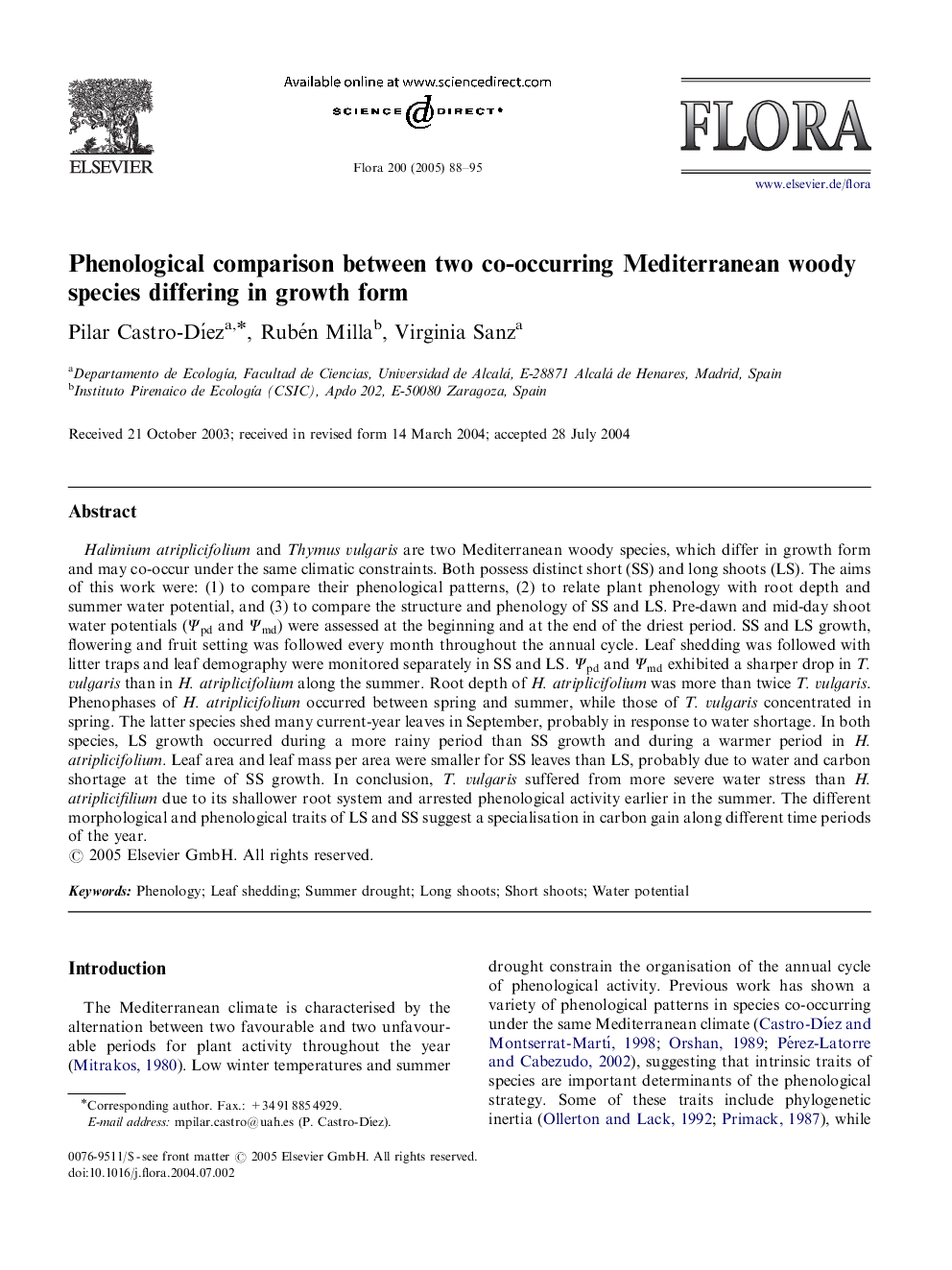| Article ID | Journal | Published Year | Pages | File Type |
|---|---|---|---|---|
| 10939267 | Flora - Morphology, Distribution, Functional Ecology of Plants | 2005 | 8 Pages |
Abstract
Halimium atriplicifolium and Thymus vulgaris are two Mediterranean woody species, which differ in growth form and may co-occur under the same climatic constraints. Both possess distinct short (SS) and long shoots (LS). The aims of this work were: (1) to compare their phenological patterns, (2) to relate plant phenology with root depth and summer water potential, and (3) to compare the structure and phenology of SS and LS. Pre-dawn and mid-day shoot water potentials (Ψpd and Ψmd) were assessed at the beginning and at the end of the driest period. SS and LS growth, flowering and fruit setting was followed every month throughout the annual cycle. Leaf shedding was followed with litter traps and leaf demography were monitored separately in SS and LS. Ψpd and Ψmd exhibited a sharper drop in T. vulgaris than in H. atriplicifolium along the summer. Root depth of H. atriplicifolium was more than twice T. vulgaris. Phenophases of H. atriplicifolium occurred between spring and summer, while those of T. vulgaris concentrated in spring. The latter species shed many current-year leaves in September, probably in response to water shortage. In both species, LS growth occurred during a more rainy period than SS growth and during a warmer period in H. atriplicifolium. Leaf area and leaf mass per area were smaller for SS leaves than LS, probably due to water and carbon shortage at the time of SS growth. In conclusion, T. vulgaris suffered from more severe water stress than H. atriplicifilium due to its shallower root system and arrested phenological activity earlier in the summer. The different morphological and phenological traits of LS and SS suggest a specialisation in carbon gain along different time periods of the year.
Related Topics
Life Sciences
Agricultural and Biological Sciences
Ecology, Evolution, Behavior and Systematics
Authors
Pilar Castro-DÃez, Rubén Milla, Virginia Sanz,
